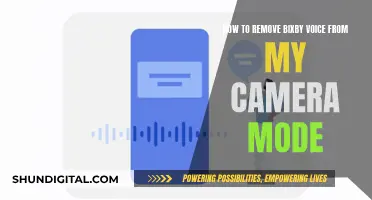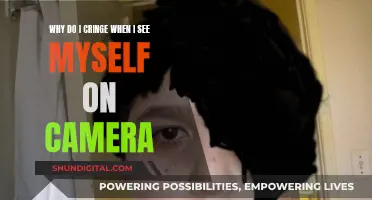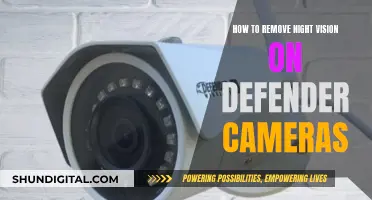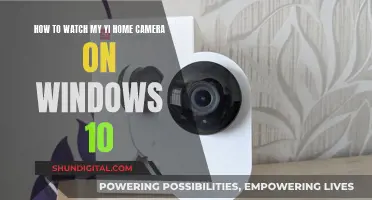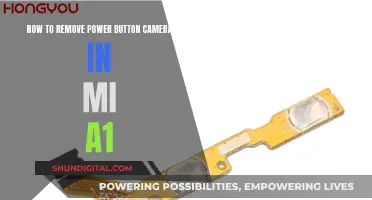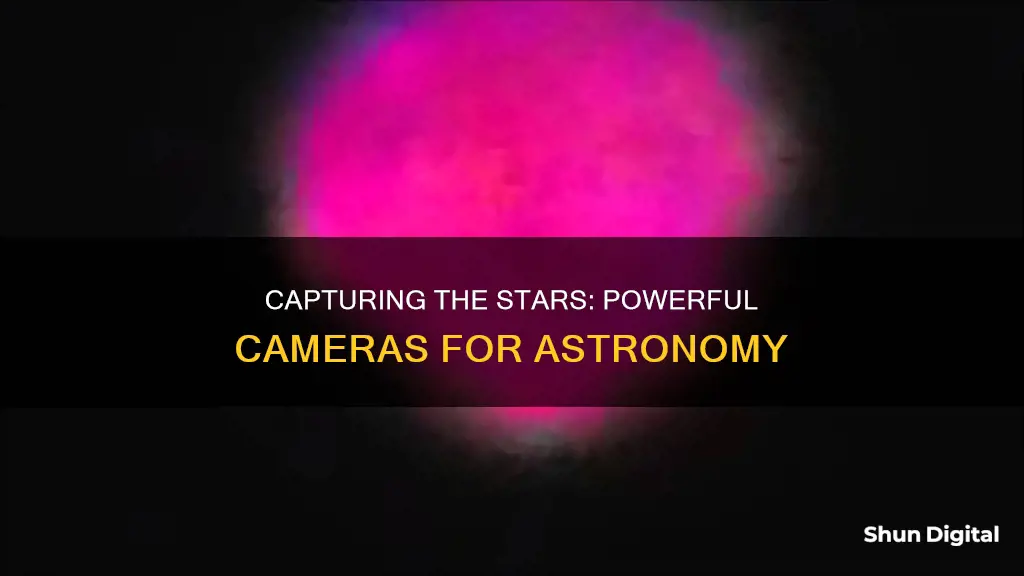
Capturing the night sky in photographs is a challenging task that requires the right equipment and techniques. The human eye is much more sensitive to light than a camera, so taking pictures of stars and constellations demands specific settings and conditions.
The brightness of the moon and light pollution from cities can wash out images, so it is best to plan shoots for nights when there is no moon, and travel to areas away from artificial light.
A DSLR or mirrorless camera with manual mode is ideal for astrophotography. A full-frame camera is preferable as it provides a larger surface area to capture the light of the stars, resulting in higher-quality images with less noise. A wide-angle lens with an f-stop value ranging from f/2.8 to f/4 is recommended, as it allows the camera sensor to gather more light in a shorter amount of time.
To capture enough light for a clear image, a long exposure photograph is necessary, typically ranging from 15 to 30 seconds. This can be achieved by adjusting the camera settings, including a high ISO of 400 to 1600 or more, a low f-ratio or aperture, and a white balance set to 'daylight' or 'auto'.
Additionally, a sturdy tripod is essential to avoid camera shake, and a remote shutter release cable is recommended to prevent any slight movements when activating the shutter.
With the right equipment, settings, and conditions, anyone can capture stunning images of the night sky, revealing the beauty of the stars and constellations that are often invisible to the naked eye.
What You'll Learn

Camera settings for star photography
Capturing the night sky and stars is a highly rewarding experience, and with the right camera settings, you can achieve stunning results. Here are some tips for camera settings to enhance your star photography:
Camera Mode:
Use Manual Mode to have full control over your camera settings. This will allow you to manually adjust the ISO, aperture, and shutter speed to capture the night sky effectively.
Image Format:
Shoot in RAW image format to minimize noise and maximize editing capabilities when you return from your shoot.
White Balance:
Use Kelvin White Balance mode with values between 4000K-5500K. Higher values will tint your photo yellow, while lower values will give it a blue hue. Adjust the white balance to match the colour of the sky as closely as possible to your naked eye.
Focal Length:
For full-frame cameras, the ideal focal length range is 14-20mm. For crop sensor cameras, a range of 10-20mm is recommended. The smaller/wider the focal length, the better, as it allows you to capture a broader view of the sky.
Aperture (F-Stop):
The best aperture setting for star photography is generally considered to be f/2.8. This setting allows your camera to collect the most starlight in the shortest amount of time while keeping the ISO low to minimize noise. If your lens has a maximum aperture of f/4, you can still achieve usable images, but the results may not be as optimal.
Shutter Speed:
The ideal shutter speed range for star photography is 10-40 seconds. A longer shutter speed will allow more light to enter, but it can also cause star trails if it exceeds approximately 25 seconds. The "500 Rule" is a guideline to calculate the maximum shutter speed to avoid star trails. Divide 500 by the focal length you are shooting at to get the maximum shutter speed. For example, at a 14mm focal length, the maximum shutter speed would be 35 seconds.
ISO:
ISO settings between 1000-4000 are ideal for star photography. Start with a lower ISO and gradually increase it until you achieve the desired brightness in your photos. Keep in mind that higher ISO settings can introduce more noise into your images.
Noise Reduction:
Turn off any noise reduction settings in your camera, as they are typically applied to JPEG images. Since you will be shooting in RAW format, these settings will only waste battery power.
Tripod:
A sturdy tripod is essential for star photography to keep your camera absolutely still during long exposures. Carbon fibre tripods are recommended for their vibration reduction capabilities, resulting in sharper images.
Location and Timing:
Choose a location away from city lights and light pollution for the best results. Time your shoots during the New Moon phase or a few days before and after, as a bright moon can reduce the visibility of stars in your photos.
Cameras: Always Watching, Your Privacy at Stake?
You may want to see also

Best cameras for astrophotography
Capturing the night sky in all its glory requires a camera that is designed to perform in low-light conditions, with great noise handling abilities and ISO performance. Here are some of the best cameras for astrophotography to consider:
Best Dedicated Astro Camera: ZWO Optical ASI533MC Pro
A dedicated scope-mounted astro camera with a full-colour sensor and an onboard cooling system to minimise noise for long-exposure astrophotography. It comes with various accessories for serious astro work such as deep-sky imaging.
Best Entry-Level Nikon: Nikon Zf
This new full-frame camera from Nikon is an absolute beast in the dark, with autofocus capabilities down to an impressive -10EV. It's a great quality camera that performs well in low light situations and comes with a relatively affordable price tag.
Best Entry-Level Canon: Canon EOS R8
A small and compact camera with an affordable price tag, the Canon EOS R8 is a great option for beginners. It's Canon's lightest mirrorless body, highly portable, and exceptional at handling high ISO, making it a brilliant option for astrophotography.
Best Lightweight Model: Sony A6700
This lightweight and compact camera from Sony is packed with advanced features and cutting-edge technology. It has a fully articulating screen, great low-light performance, and impressive AI-powered autofocus. It's a step up for beginners and enthusiasts, but professionals will likely want to opt for a full-frame camera.
Best Mirrorless Camera for Astro: Nikon Z8
The Nikon Z8 is simply one of the best cameras on the market. For low-light photography, it has Starlight View, which drops the autofocus detection range down to -9EV, and a dedicated Night Vision mode that keeps your night vision intact. It's the highest-resolution full-frame camera, producing incredible-quality images that display incredible detail in both light and dark areas, ideal for astrophotography.
Best for Timelapse Astro: Canon EOS 6D Mark II
Astrophotographers will love the 4K timelapse feature, and the vari-angle touchscreen display makes composing shots easy. You get a lot of camera for your money, so it's perfect for beginners.
Best Value for Money: Canon EOS R
Although relatively old, the Canon EOS R still performs above average in low light. It's lightweight and functional, with a large, mobile screen. It's a good value for money option, though newer rival models have more features.
Is Your TV Watching You?
You may want to see also

Star photography equipment
Capturing the night sky and celestial events like meteor showers or the Northern Lights requires quite a bit of preparation. Light is in short supply when photographing the night sky, so it's important to maximize it. Here is a list of equipment to help you capture the stars:
Camera
Any camera with manual mode is great for star photography as it allows you to independently control shutter speed, f-stop, and ISO. Full-frame DSLR cameras are generally the easiest to get satisfactory photographs at night. They have larger sensors and larger pixels, resulting in images with less noise and better image quality. The Nikon Z7 and the Sony A7S III are two examples of full-frame cameras that are excellent for astrophotography.
Lens
A wide-angle lens with an f-stop value ranging from f/2.8 to f/4 will work best for star photography. The smaller the number under "f", the wider the lens aperture can open, allowing your camera's sensor to pick up as much light as possible in the shortest amount of time. For full-frame cameras, focal lengths between 14mm and 20mm are recommended, while crop sensor cameras should aim for 10mm to 17mm. The Sigma 14mm f/1.8 DG HSM | Art lens is a great option, as it has a large aperture and a wide field of view.
Tripod
A tripod is essential for astrophotography to prevent blurring caused by even the slightest movement. It ensures stability and is more portable and customizable than alternative options like a wall. A sturdy carbon fiber tripod with an adjustable ball head is ideal, as carbon fiber reduces vibration, resulting in sharper images. The Vanguard Alta Pro 263AB is a good option for a tripod, offering excellent stability at a reasonable price.
Intervalometer
An intervalometer is not required for star photography but is necessary if you want to capture star trails. It connects to your camera, allowing for exposures longer than 30 seconds and reducing camera shake.
Filters
While filters are generally not recommended for night photography as they reduce the amount of light reaching the sensor, there are a couple of exceptions. A fog filter can make stars appear larger, making it easier for viewers to identify constellations. A star filter, used when stars are the only light source in the frame, creates a "pointed" effect, making the stars appear more pronounced and luminous.
Other Accessories
- Lens hoods: These block unwanted light from outside your field of view, preventing issues like lens flare.
- Remote or timer: Using a remote shutter release or the camera's built-in timer helps eliminate camera shake and reduce the likelihood of blurs and light trails.
- Flashlight: Useful for illuminating specific focal elements in extremely low-light situations.
- Extra batteries: Long exposures can quickly drain your camera's battery, so it's essential to bring extras.
- Star tracker: For long exposures without star trails, a star tracker like the Sky-Watcher Star Adventurer Mini tilts your camera to track the stars.
- Light pollution filter: This type of filter reduces the yellow/greenish colour caused by artificial light, allowing you to capture the true colours of the night sky.
Cameras' Infrared Vision: Unveiling the Heat-Sensing Mystery
You may want to see also

Star trailing
Planning and Preparation:
- Choose a location away from light pollution. Use tools like light pollution maps to find dark areas that are ideal for star photography.
- Consider the moon phase and cloud cover. A crescent moon can provide nice lighting to the landscape, but during a full moon, it might be too bright to capture star trails effectively. Aim for nights with 0-50% cloud cover.
- Determine moonrise and moonset times. Start your shoot a couple of hours before moonrise or moonset to maintain consistent lighting conditions during your exposure.
- Check the weather forecast to ensure clear skies.
- Bring the necessary equipment: a camera with manual mode, a sturdy tripod, an intervalometer (optional but recommended), extra batteries, warm clothing, and a flashlight.
Camera Settings and Composition:
- Mount your camera on a tripod and compose your shot. Include interesting foreground objects like abandoned buildings, large infrastructure, or natural features.
- Set your camera to manual mode to control shutter speed, aperture, and ISO manually.
- Focus your lens. Set the focus to infinity if using a wide-angle or fisheye lens. You can also focus on a distant object during the day and mark that focal point with tape.
- Set your camera settings:
- Aperture: Use a wide aperture (f/2.8 to f/5.6) to collect more light.
- Shutter Speed: Use longer exposures (20-90 seconds) for star trails. The "500 Rule" can help calculate the maximum shutter speed to avoid star trails.
- ISO: Keep ISO fairly low (500-3200) to reduce noise. Start at ISO 300 and adjust as needed.
Capturing the Star Trails:
- Take multiple exposures of the night sky with the same composition. Each exposure will capture the stars at different positions relative to the Earth.
- Use an intervalometer or your camera's built-in interval timer to automate the process. Set the number of shots, shutter speed, and time between each exposure.
- If you don't have a remote or intervalometer, you can use duct tape to hold down the shutter button for extended periods.
- Capture at least 50 photos for a minimum of 25 minutes, or several hundred photos for longer star trails.
Post-Processing:
- Import all your photos into photo editing software like Adobe Photoshop or Lightroom.
- Synchronize the editing settings across all photos to ensure consistency.
- Stack the images by layering them and using the "Lighten" blending mode to create the star trails effect.
- Remove any unwanted elements like airplane trails using the brush tool.
- You can further enhance the image by adjusting lighting, adding foreground interest, or using creative blending modes.
Accessing HCVR Camera Footage on Your PC
You may want to see also

Light pollution
There are ways to mitigate the effects of light pollution. One way is to use a light pollution filter, which suppresses the emissions generated by artificial lighting. These filters reduce the yellow/green colour cast by city lights, improving the clarity, colour, and contrast of astrophotography images. Filters can be relatively affordable, but higher-end models can be more expensive.
Another way to reduce the impact of light pollution is to shoot during a new moon, as the moon can produce enough skyglow to reduce contrast in images. Additionally, planning shoots during darker moon phases can help.
Some other tips for shooting in light-polluted areas include:
- Using a monochrome camera with narrowband filters to aggressively ignore artificial light and isolate light from specific gases in space objects.
- Using camera filters to isolate the desired light wavelengths.
- Collecting as much exposure time on the target as possible, as stacking images can increase the signal-to-noise ratio.
- Using a star tracker or equatorial mount to compensate for the Earth's rotation and allow for longer exposures without star trails.
- Shooting during the blue hour, when the yellow street lights blend well with the blue night sky.
Smart TV Camera: Where is it Located?
You may want to see also
Frequently asked questions
You'll need a camera that can handle low-light conditions. Any camera with manual mode is great for star photography. Full-frame cameras are best as they have a larger surface area to capture the light of the stars.
You'll need to use a long exposure, a wide aperture, and a high ISO.
You'll need a tripod to keep your camera steady, and a remote shutter or shutter release cable to avoid camera shake.
The best camera for astrophotography depends on your budget and skill level. The Nikon Z8 is the best camera for astrophotography overall, but the Canon EOS R8 is a good lightweight option, and the Nikon Zf is a great entry-level choice.
The 500 rule is a method used to determine the exposure you should use to avoid star trailing in your images. Take 500 divided by the focal length of your lens. For example, if you have a 20mm lens, 500 divided by 20 = 25, so 25 seconds is the limit before star trailing appears.



